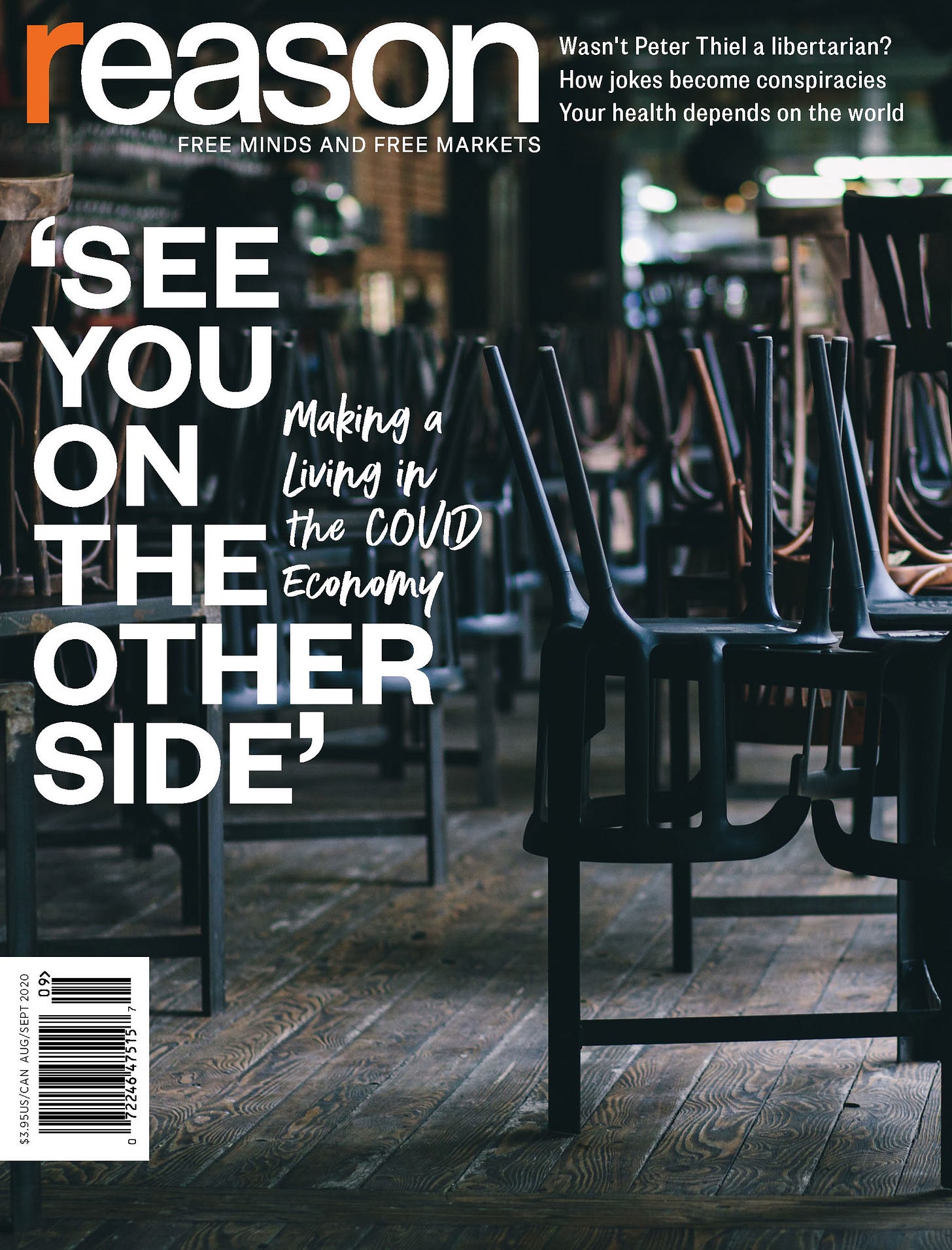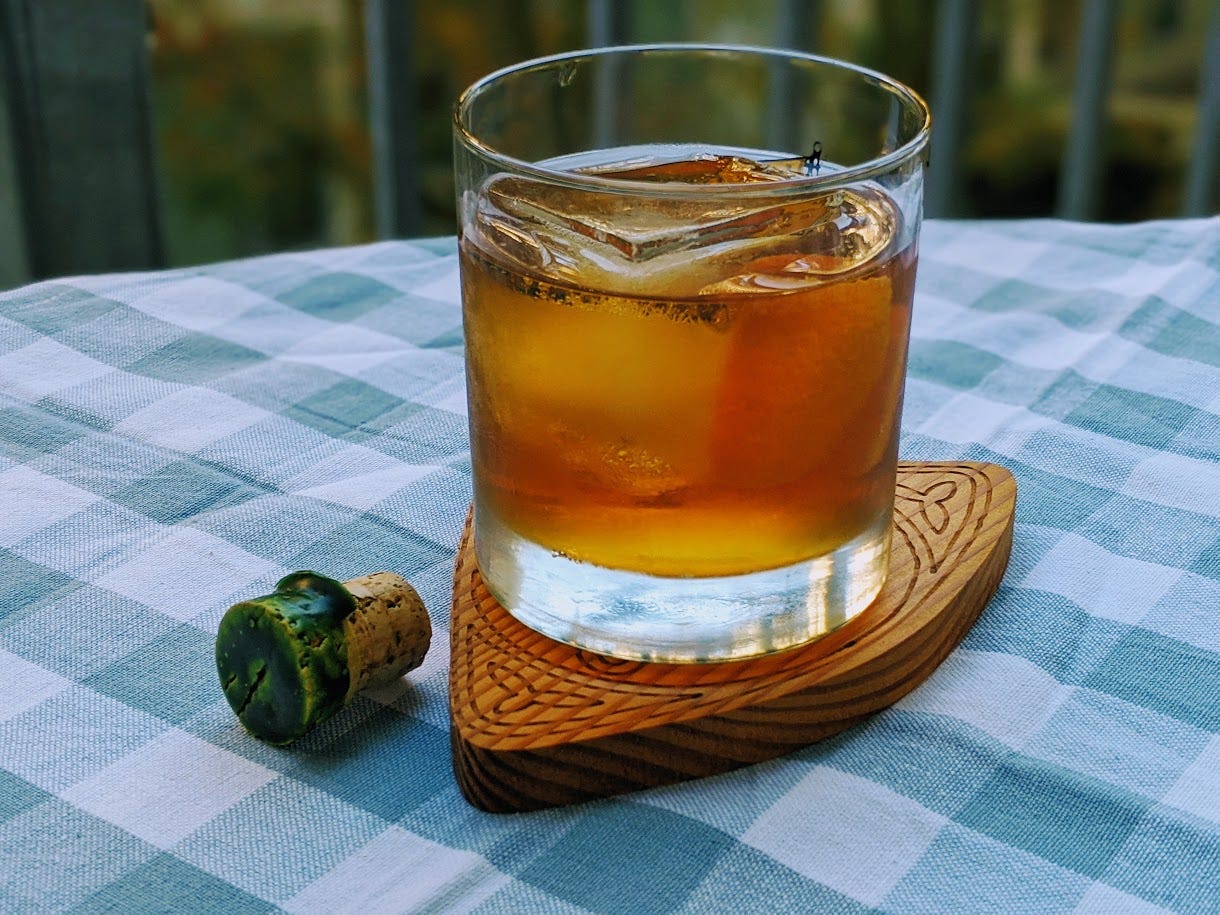Coronavirus cuisine
Much has been written about bars and restaurants closing during the pandemic. In my cover story for the latest issue of Reason, I look instead at how some are succeeding despite the odds by finding new ways to reach their customers even when their guests can’t physically dine in. It’s also a look at how the pandemic will change hospitality for the long haul. Many businesses will shutter permanently and entrepreneurial capital will be lost; those that stay open may have to simplify their offerings. The short-run looks grim, but there will also be opportunities. Commercial leases will be cheaper, regulations will be rolled back, technology will change the ways we find and order food, and new ideas will be tried. This piece was written back in May, but it still holds up. The one paragraph I thought would be out of date by the time of publication was the part about Oregon being the only state on the West Coast not allowing sales of cocktails to-go. Alas, still valid! Read the whole thing here.

Covering COVID
As always, the Atlantic’s coverage is top notch. Derek Thompson writes about “hygiene theater,” the ways that obsessive displays of cleaning surfaces misallocate resources and ignore the more prominent risks of aerial transmission. James Hamblin offers practical advice about masks. Sarah Zhang looks into the challenges and pitfalls we’ll face when an effective vaccine is ready for distribution.
New studies from Germany add to fears that COVID survivors may suffer from cardiac damage even after they recover from the infection. It’s a reminder that there’s still much we don’t know about the long-term impact of the virus, and that death is far from the only outcome to be concerned about.
The Economist explores speculations about the zoonotic origins of the virus, with tantalizing clues from its relatively low impact in southeast Asia.
Brazil is second only to the United States in the toll of COVID deaths. This piece in the New York Times is a stunning work of visual journalism exploring the virus’s spread along the Amazon.
There are many reasons for the United States’ poor performance containing the virus, but high among them is a right-wing assault on science. Nidra Poller writes about the ideological response.
If things are so grim, why isn’t the stock market crashing? Josh Barro offers a clear analysis.
Social distancing
To listen: A friend on Twitter observed that today is the birthday of singer-songwriter Bobbie Gentry. Lately I’ve been playing her breakout 1967 album “Ode to Billie Joe” as well as “Bobbie Gentry’s The Delta Sweete Revisited,” a cover album by Mercury Rev featuring collaborations with Lucinda Williams, Beth Orton, Marissa Nadler, Hope Sandoval, and other female vocalists. (A live performance of the album with Beth Orton was also the last concert I got to see before COVID ended such things.)
To cook: On Wednesday, my friend Namazake Paul is offering a steak and sake online seminar with sake expert Monica Samuels. He’s also offering a kit with three bottles of sake and koji for dry-ageing steaks, all delivered by mail.
To drink: This weekend I revisited a spur of the moment cocktail created during a stage shift in Portland many years ago, which later made it to the menu of Metrovino. The Mexican Train is sort of a mezcal take on the Tipperary, mixing mezcal with sweet vermouth, Chartreuse, and mole bitters. The cocktail is a little brand-specific: I first made it with Ilegal reposado, and the ageing does help here, as does using a richer vermouth such as Carpano Antica or Cocchi di Torino. That said, try it out with whatever mezcal you have on hand and you can probably make adjustments for balance if needed.
2 oz mezcal
1 oz sweet vermouth
1/4 oz Chartreuse
2 dashes mole or chocolate bitters
orange peel, for garnish
Stir with ice and strain onto a large cube, garnishing with the expressed orange peel.

Newsletter details and obligatory self-promotion
Subscribe here. Read the archive. Follow me on Twitter, Instagram, or my blog. Buy my books. Browse the newsletter bookshop.


